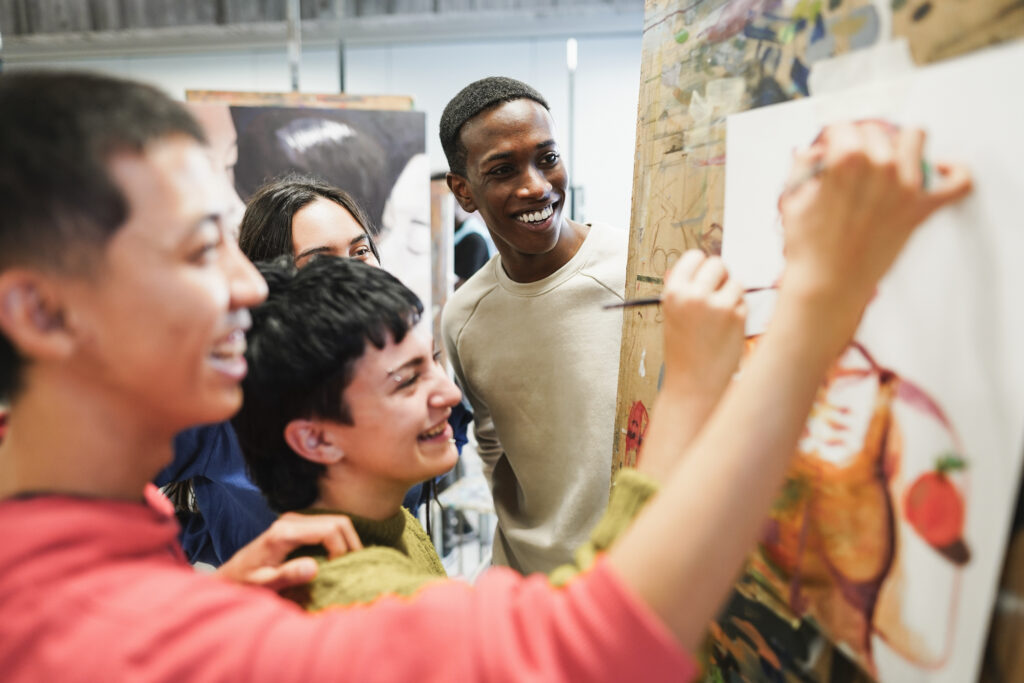When it comes to guiding teens through the maze of interests and opportunities today, there’s no single map. As guardians and educators, we often find ourselves asking: How can we help young people uncover what excites them? Isn’t passion something you’re just born with?
It turns out, not always.
Research suggests that passion can be developed over time. A 2021 study found that students who use thoughtful strategies to explore their interests are more likely to grow their passion as they go (Chen, P., Lin, Y., Pereira, D. J. H., O’Keefe, P. A., & Yates, J. F., 2021).
It’s something that can grow, not just something you stumble into. So, how do we help that process along?
Start by Noticing
Sometimes the best starting point is simply noticing.
When a teen spends hours sketching or gets caught up in conversations about the environment, that’s not random. These moments can reveal where their curiosity lies. By paying attention to what they enjoy and what they care about, we open the door to more meaningful conversations.
These observations can help us ask better questions: What do you enjoy about this? Have you ever thought about doing more with it? It’s not about pushing them in a specific direction — it’s about helping them see that their interests matter.
The more we listen and reflect back on what we notice, the more likely they are to keep exploring.
Creating Meaningful Conversations
One of the most impactful ways we can support teen growth is through conversation—not just talking, but listening with intention. It’s easy to give advice or jump in with our own experiences, but what teens often need most is someone who’s truly paying attention.
Ask open-ended questions. Be patient with the pauses. Give them space to share their ideas, even if they’re still figuring things out. These conversations can reveal what they care about and what motivates them—especially when they’re feeling stuck or unmotivated.
Research shows that students who believe passion can grow are more likely to keep developing it, even during low points (Chen, P., Lin, Y., Pereira, D. J. H., O’Keefe, P. A., & Yates, J. F., 2021). That belief often starts with someone in their life who sees them, hears them, and reminds them that it’s okay to keep exploring. Our role isn’t to have all the answers—it’s to be curious with them.
Creating Space for Growth
Noticing a teen’s interest is one thing. Helping it grow is something else entirely.
Growth doesn’t always look like big leaps. It might be a small project, a question they asked, or the first time they stuck with something hard. Celebrate those moments. They add up. When teens feel seen and supported, especially in the early stages of trying something new, they’re more likely to stay with it.
Support also means making room for mistakes. When teens know they’re allowed to take risks, try new things, and learn through failure, their confidence grows. Research backs this up. Students do better when they feel supported by adults and peers, when they’re challenged in ways that matter to them, and when they’re trusted with real tasks that stretch their thinking (Fredricks, J. A., Alfeld, C., & Eccles, J., 2010).
By creating that kind of environment, we give them more than encouragement. We give them the space to grow into who they’re becoming.
Facilitating Exploration
Teens don’t always rely on motivation alone to pursue what they love. That’s where we come in—with support, encouragement, and the right tools to help them get started.
Exploration is more than a nice-to-have. It’s a key part of learning and growing. When students get the chance to step outside the classroom and try something hands-on, they start to see what really clicks. It might be through a club, a weekend workshop, a volunteer role, or a hobby they’ve just discovered. Every experience helps them learn more about what they enjoy, what they’re good at, and what they want to keep exploring.
These moments matter. They don’t just confirm existing interests. They introduce new ones, too. Our role is to make that kind of exploration possible. That might mean finding opportunities in your community, encouraging a teen to try something outside their comfort zone, or using tools at home or in the classroom to help them test out a new idea.
Crafting an educational experience beyond core subjects
Learning doesn’t have to stop with core subjects or the traditional school day. When we give teens the chance to explore topics they care about, we open the door to deeper engagement and lasting motivation. Passion-based learning, as highlighted by Edutopia, helps students push through challenges and stay focused on goals that feel meaningful to them.
This kind of learning is about more than just academics. It’s about helping teens connect what they’re learning to who they are. Whether it’s a specific interest like digital art, esports, or environmental science, specialized learning creates room for students to follow their curiosity and build on their strengths.
Micro-courses are one example of how this can take shape. These short, focused learning experiences give teens the freedom to explore new areas, connect interests to possible career paths, and grow confidence in what they enjoy. When education aligns with personal interests, learning becomes something they want to keep doing—not something they have to do.
As we wrap up, it’s worth remembering that helping teens find and grow their passions isn’t a checklist item. It’s a shared effort that calls for patience, empathy, and consistent encouragement. When we build environments that support curiosity, celebrate small wins, and offer space to explore, we’re not just helping students find their way through school. We’re helping them build a foundation for whatever comes next.
For more on this topic, Mindset: The New Psychology of Success by Carol Dweck is a great place to start. It explores how a growth mindset can help teens stay motivated and open to learning throughout life.
Help Your Student Explore What They Love
Every student deserves the chance to discover what excites them. Our interactive, interest-based learning experiences make it easier for students to dive into topics they care about—whether it’s creative, career-focused, or just for fun.
Explore Learning Experiences







